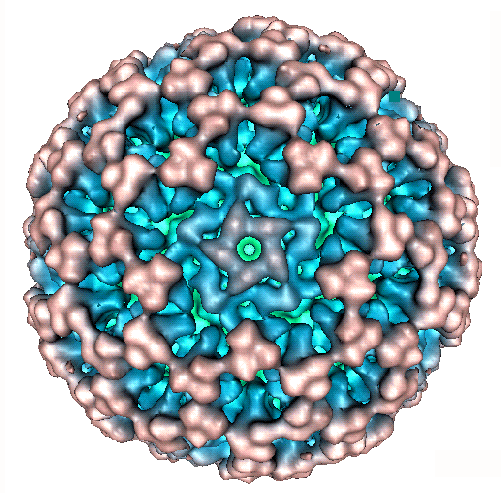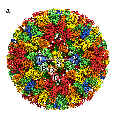|
Family:
Reoviridae, Genus: Orthoreovirus, |
|
*IAH
dsRNA virus collection number
( ICTVdb
isolate Accession Number) |
Virus
genus
Species
&
Serotype
(identification method) |
Place of original sample eg country
town
[grid reference]
(date
original sample was taken) |
Isolated from which host species e.g
cow, sheep, etc
(Date of virus isolation, where, by
whom) |
Position of storage in reference
freezers (Date added
to collection) |
Suppliers
Isolate Designation |
Original sample material, Adapted
to which cell types
(Passage history of sample)
[IAH passage history] |
* Original sample supplied to the collection by person / institution
[IAH, ISIS sample number] |
Comments |
References & accession numbers
|
|
AUS1998/01
|
Identified as Orthoreovirus by AGE genome profile
|
Australia,
Orange in New South Wales
The bat was caught on
12th Feb 1998.
|
from
pooled tissues of an apparently healthy micro-bat (presumed
insectivorous) |
|
Old isolate No.:
Z405
New Isolate No.:
E034
EMAI 98/521
|
(4 HmLu-1
/
2 BHK21)
[IAH/??]
|
Peter Kirkland,
Elizabeth Macarthur Agricultural Institute,
Menangle
NSW 2568 Australia
Sent: 7th Sept 2010
|
(MTA)
Note supplied with sample: CPE positive /
BT-PCR negative
Originally supplied as an unassigned orbivirus
The isolate was made from an apparently healthy microbat (presumed
insectivorous, species unknown) collected in a basement corridor of a
college at Orange, New South Wales. it is not possible to determine
whether the bat was actively infected or just carrying a virus it had
ingested in an infected insect.
|
|
MOR2004/01 |
Identified as Orthoreovirus by AGE comparison to Ndelle
virus |
Sefrou
(centre of Morocco) |
Sheep |
Shelf B2, boxB2β,
rows G1-H10
(16/Mar/2005) |
BTV/SEF |
blood
[IAH-E1/BHK3] |
Dr Mehdi El Harrak
Virology department
Biopharma Laboratory
BP4569 Rabat Akkari
Morocco |
Originally supplied as probable BTV-4 ,
see
OIE report 5th
November 2004 |
|
|
CAR1974/01 |
Mammalian
orthoreovirus
(identified by Nucleotide sequence analysis) |
Camaroon
(05/08/1974) |
Rodent (Mus
musculoides) |
Shelf B2, boxB2β,
rows I1-J10
(30/09/2002) |
Ndelle virus
DAK AN Y
1444 M23654 PYSM) |
BHK
[IAH- BHK4] |
|
Attoui
et al 2001
Zeller
et al 1989
[Seg-1: AF368033]
[Seg-5:
AF368034]
[Seg-7:
AF368035]
[Seg-8:
AF368036 ]
[Seg-10:
AF368037 ] |
|
IND1997/02 |
Mammalian
orthoreovirus
(identified by AGE then Nucleotide sequence analysis) |
Tirunelveli district of Tamilnadu, India
(1997) |
|
(22/04/2002) |
(R7/02) |
BHK
(Egg isolate Vero30 BHK2) |
G. Dhinakar Raj & K. Nachimuthu |
Seg-1 to -10 sequenced by Sushila Maan and Alan Samuel |
|
|
COR2003/07 |
MRV-3
Identified as Orthoreovirus by AGE comparison to Ndelle
virus |
from Corsica
2003
|
Sheep |
Shelf
D11
Box
D11β
Rows
E1-F10
(Added to
collection on
1st
July 2014)
|
|
Blood
[PIR-VERO2] |
Supplied by Stephan Zientara
AFSSA, Maisons Alfort France 23rd July 2010 as cell culture
material |
*MTA*
: not to be supplied to 3rd parties without written
consent from original source
|
|
|
|
|
|
|
|
|
|
|
|
|
|
|
|
|
|
|
|
|
|
|

